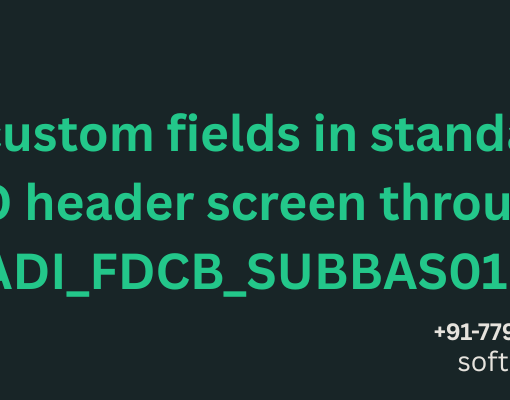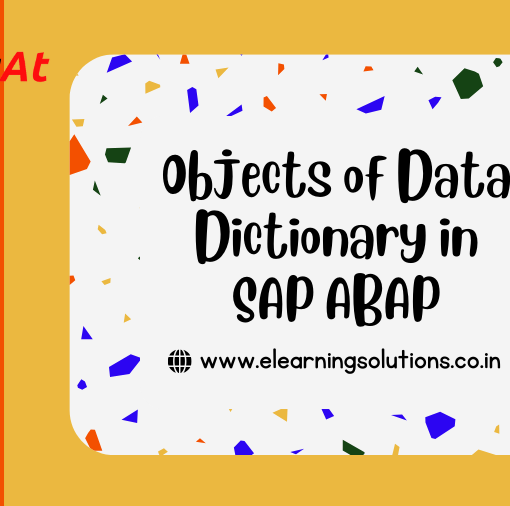What is SAP QM?
SAP Quality Management (QM) is an SAP ERP Central Component that assists enterprises in implementing and managing quality control systems. It’s designed to avoid flaws, allow for continuous process improvement, and develop long-term quality control systems. Compliance with manufacturing quality laws, fewer operational expenses, and improved customer satisfaction are all potential benefits for the company.
ECC components like Materials Management, Plant Maintenance, Production Planning, Sales and Distribution, Finance, Controlling, and Human Resources are all integrated with SAP QM. This integration means that SAP QM tasks can be incorporated into tasks within these other ECC components.
SAP QM process flow
SAP QM is largely utilized in quality control processes that firms use on goods as they progress through the product lifecycle, such as examining things as they enter a facility, during manufacturing, and as finished goods are shipped out.
SAP QM is a collection of tools for a variety of interconnected tasks that can be tailored to an organization’s specific procedures. Each of these instruments has capabilities that are unique to that particular task. These tools include:
- Quality Planning: It allows you to create and manage quality inspection plans that specify what commodities are tested, how the inspections are conducted, the features of the goods to be inspected, and the type of inspection equipment utilized.
- Quality Inspection: It enables you to verify whether a product fulfils set quality requirements and to keep track of inspection findings. Inspection specifications defined in Quality Planning are used by Quality Inspection.
- Quality Certificates: It enables you to certify that goods have satisfies pre-determined quality standards. Customers may have various quality demands for their goods, and you may use Quality Certificates to ensure that it is taken into account. However, it can also generate generic certificates that don’t employ such precise criteria.
- Quality Notifications: It allows you to keep track of problems with products you get from a vendor, problems that arise during production, and problems that customers report. It can be established to record, process, and manage both positive and negative information on products, as well as quality complaints.
- Quality Control: It enables you to supervise the quality assurance procedure. Inspection results, for example, can be used to update quality levels, control charts can be used to manage characteristics values, and vendor validations for the procurement process can be updated.
- Test Equipment Management: It allows you to keep track of test equipment used in quality control inspections. You may keep track of each piece of test equipment and ensure that it is calibrated on a regular basis.
SAP QM Master Data
Within the SAP Quality Management module and for other SAP applications we need to maintain the data pertaining to inspection planning and inspection lot processing.
Basic SAP Master Data for inspection planning should be maintained before creating an inspection lot and recording inspection findings.
Following SAP QM Master Data should be set up before inspection of any material:
Master Inspection Characteristics (MIC)
Master Inspection Characteristics are needed to specify material inspection criteria such as length, width, viscosity, and so on. To simplify and unify inspection planning processes, we build master inspection characteristics at the plant level. It also aids in the organization of master inspection characteristics in order to prevent duplicate MIC production.
Below are the two types of Master Inspection Characteristics available in SAP:
1. Quantitative
The outcomes of the quantitative inspection are recorded using quantitative characteristics. While recording findings, inspection values can be immediately fed into these types of attributes. At the master level or while developing an inspection plan, characteristics specification limitations such as Upper Limit, Lower Limit, and Central Limit can be defined for each inspection characteristic. The inspection method can also be linked to the level of inspection qualities.
2. Qualitative
The results of Attribute inspection, such as “Ok” or “Not Ok”, are recorded using Qualitative characteristics. For documenting results against Qualitative inspection characteristics, code groups/selected sets of Catalog type 1 can be employed. Inspection characteristics can be linked to an appropriate inspection procedure.
Sampling Procedure
The sampling procedure is the method for determining the sample size for an inspection lot. It is suitable for use in inspection plans. A fixed sample, a percentage sample, a 100% sample, or a sampling scheme can all be used. The collection of sampling strategies is referred to as a sample scheme. A sampling plan specifies the sample size depending on the quantity of an inspection lot and the criteria for determining whether or not a sample is accepted or rejected. The sampling size is set based on the business necessity. For example, if a batch of a drug needs to be examined, sampling for inspection is arranged based on the quantity of the drug manufactured.
SAP Inspection Plan
Inspection plans specify how a single or several materials will be inspected for quality. We define the sequence of inspection activities and the range of specifications available for examining master inception characteristics, the sampling procedure for calculating the sample size for inspection, the inspection method for inspecting the MIC, and so on in the inspection plan.
The inspection plan’s “status” and “use” can be tracked to determine whether the plan is active or not. The inspection plan can be identified using the SAP system’s group number (client level) and group counter (plant level). If the parameters to be inspected are the same, many materials can be tied to a single plan.
Quality Info Record in SAP
For a “material-vendor relationship”, a Quality Info record is kept. When the quality of the product given by a certain vendor is compromised, it is used to prevent the material from being procured through that vendor. We will maintain the quality system for the vendor and material combination in this SAP master. This SAP master will become mandatory only if the QM Procurement key is active in the material master.
The SAP system verifies whether a Q-info record is required and available for the material and vendor combination when a quotation or purchase order is created. The purchase order is checked to see if it can be released based on the Q-info record.
Quality information records need to be maintained if we would like to use the source inspection functionality which eventually means, materials will undergo an inspection prior to the material reaching the plant for Goods Receipt (GR).
This inspection will be conducted only on the basis of a purchase order established in the SAP system for material, vendor, and plant combination. If the material has already passed the source inspection, there will be no GR (Goods Receipt) inquiry.
In situations where scrutiny is restricted, the Q info record is also important. This means that if it was purchased from an “xyz” vendor, the inspection should continue, but not if it was purchased from an “abc” vendor.





